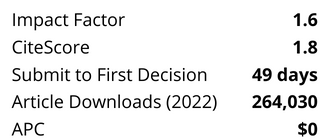Diyarbakır is the biggest city and the largest urban settlement in the Tigris Basin in Turkey. It has been gradually developing and growing thanks to the Southeastern Anatolia Project (GAP), and is one of the most important centers of industry, agriculture and animal husbandry in the Tigris Basin. The Tigris River is an important water source for the city, and it serves for irrigation, fishing, recreation and receiving wastewater. With the development of industry, agriculture and the growth of urban population, its pollution has become a serious problem. Pollution from domestic, industrial and agricultural activities has led to deterioration of water quality. In this context, the aim of the present study is to identify point sources of pollution and to assess the surface water quality of the Tigris River in the study area by monitoring physicochemical parameters. Diyarbakır produced a negative impact on the Tigris River water quality, particularly after the WWTP discharge. Concentrations of chemical oxygen demand, organic nitrogen, total nitrogen and total phosphorus increased markedly downstream of Diyarbakır WWTP discharge point. During the summer, the extent of organic pollution was so serious in the stations, downstream of WWTP, that dissolved oxygen became almost absent from the river water. The metal concentrations of all water samples were mostly below or close to the maximum permitted concentration for protection of aquatic life and drinking water.
Skip Nav Destination
Article navigation
Research Article|
March 01 2010
Assesment of Water Pollution in the Tigris River in Diyarbakır, Turkey
Memet Varol;
Memet Varol
*
aMinistry of Agriculture and Rural Affairs, Province Control Laboratory, 21010, Diyarbakır, Turkey
*Corresponding author. Tel: +90 4122266046. Fax: +90 4122266052. E-mail: mvarol23@gmail.com
Search for other works by this author on:
Bülent Gökot;
Bülent Gökot
bBiology Department, Faculty of Art and Science, University of Dicle, 21280, Diyarbakır, Turkey
Search for other works by this author on:
Aysel Bekleyen
Aysel Bekleyen
bBiology Department, Faculty of Art and Science, University of Dicle, 21280, Diyarbakır, Turkey
Search for other works by this author on:
Water Practice and Technology (2010) 5 (1): wpt2010021.
Citation
Memet Varol, Bülent Gökot, Aysel Bekleyen; Assesment of Water Pollution in the Tigris River in Diyarbakır, Turkey. Water Practice and Technology 1 March 2010; 5 (1): wpt2010021. doi: https://doi.org/10.2166/wpt.2010.021
Download citation file:
Sign in
Don't already have an account? Register
Client Account
You could not be signed in. Please check your email address / username and password and try again.
Could not validate captcha. Please try again.
eBook
Pay-Per-View Access
$38.00




%20cropped.png?versionId=5954)